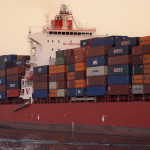A falling industrial demand, falling commodity prices, falling trade, falling sales. This is what we see now in China, Europe and even in the USA. What comes next? Falling employment, falling customers’ demand, falling economy. Global trade gives us clear signals that we cannot ignore.
A crisis is coming and these are the signs:
- China: October imports fell 18.8 percent in comparison to the previous year1. It is the beginning of the domino effect, with its coal and iron background.
- Taiwan: October orders from China fell 10.6 percent in comparison to the previous year, from Japan 24 percent down. Taiwan’s export orders are seen as an indicator of a demand for high-tech gadgets and for Asia’s exports2.
- Japan: first decline in exports in October since August 2014 (2.1 percent in comparison to the previous year). Reasons: China’s slowdown, poor Asia’s demand, the yen not weak enough. Double-digit declines in auto parts and electronic components3.
- Germany: a monthly drop in exports in August, due to declines in industrial production and the number of factory orders4.
- UK: 40% of respondent-companies are below average in export orders. Reasons: China’s downturn and a strong sterling5.
- Baltic Exchange’s main sea freight index fell below 500 for the first time. Baltic’s BDI Index (gauging the cost of shipping) reflects a slower coal and iron ore demand in China. 19-commodity Thomson Reuters/Core Commodity CRB Index reached 13-year lows6.
- USA: quiet three busiest U.S. seaports during ‘peak shipping season’. Imports in Los Angeles, Long Beach and New York fell in both September and October for the first time in a decade7.
‘The growth rates of global trade observed so far in 2015 have been associated with the global recession,’ OECD warns8.
Not convinced yet? It is going to be worse. The reintroduction of border controls in Europe is going to add billions in costs for business and disrupt supply chains, the Chartered Institute of Procurement and Supply warns9. Germany, as a great exporter and the engine of European economy, can be particularly affected.
There are many negative signals, but there are also some positive. US economist Neil Dutta interviewed by Chris Matthews from Fortune says that trade does not have to necessarily grow faster than the global growth10, so maybe we should not panic yet, but rather act. A lower dependence on US’ and China’s economies could be a good trend. New trade chains can be opened after lifting sanctions on Iran and Cuba as well.
However, it is always better to be ready for bad weather. Shipping companies have been already preparing for the worse, negotiating some great mergers in order to avoid financial pain and overcapacity1. US trucking companies are also adjusting to lower traffic, cutting almost 3000 jobs between August and October7. You can ignore it or not, but trade, shipping or trucking have been so far good indicators of the economy, foreshadowing growth or turmoil. Those who believe in the Americans’ good fortune fueled by eternal trade deficit financed by a stream of cheap money from Japan and European Central Bank may end up having good luck, if nothing undesirable occurs; but those who are getting ready to the storm will be left to their own devices.
Reference:
1. How a China slowdown could spark a shipping M&A wave Source: CNBC 23-11-2015
2. Taiwan export orders fall for 7th month, weak demand from Japan, China Source: Ajot 20-11-2015
3. Japan Exports Fall for First Time in Over a Year Source: WSJ 18-11-2015
4. German exports show massive drop in August Source: DW 08-10-2015
5. UK manufacturers fear bleak outlook as export orders tumble Source: The Guardian 19-11-2015
6. Dry bulk shipping record low a warning flag for global economy Source: Reuters 20-11-2015
7. Quiet U.S. Ports Spark Slowdown Fears Source: WSJ 15-11-2015
8. OECD fears slowdown in global trade amid China woes Source: The Guardian 09-11-2015
9. Global supply chains hit by terror threats and flows of migrants Source: FT 18-11-2015
10. Global Trade Slowdown: The Mystery of Empty U.S. Ports Source: Fortune 16-11-2015




